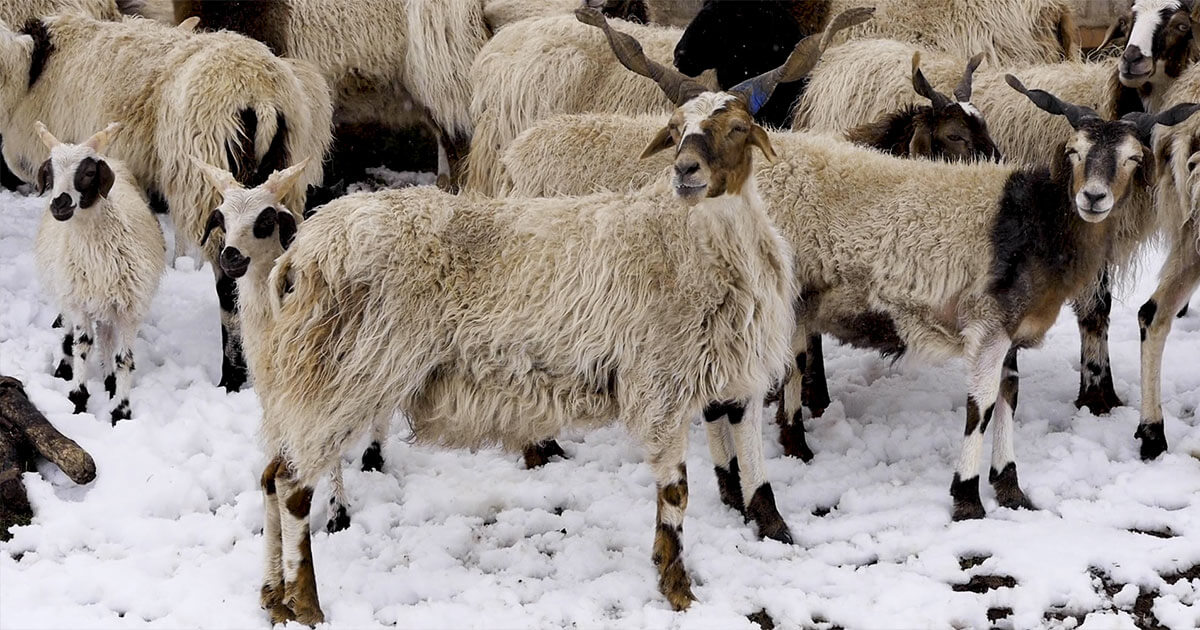For Tibetan nomads, herding is the most important and constant task. Nomads move from pasture to pasture to find better grazing areas. Better grazing land means better milk production, which in turn means more and better-quality butter, healthier and stronger herds, better meat for the family, better prices for the yak and sheep, and more dependable transportation when moving camps.
A Tibetan nomad family’s life revolves around herding practices, which often contribute to accumulation of wealth, social standing, and perception of one’s work ethic. In other words, herding takes center stage in a nomadic family’s livelihood. In the Tibetan language, the most important animal among the herds—the yak—is synonymous with the words for “wealth” or “precious things” (nor).
Although most significant and numerous, yaks are not the only animals herded by nomads. Sheep, goats, horses, and sometimes even pigs are also commonly tended. Sheep and yaks do well on open pastures, but goats are suited for arid and more mountainous regions due to their preference for rough plants and shrub leaves. Sheep are second only to yaks in terms of importance to nomads because they provide wool, meat, and hides. Sheep hides are the primary material for Tibetan sheepskin robes, which are warm and thick but not overly heavy. Tibetan sheep also carry a type of wool valued for its luster and tensile strength; moreover, its light and smooth fibers make it ideal for carpets.

Horses are also an important part of herding culture, especially in northeastern Tibetan areas. Although not herded in great numbers, horses are used for transportation and play a major role in many religious and cultural festivities, such as horse races and horsemanship skills contests, which showcase the rider’s agility, athleticism, and skills to tame, control, and take advantage of the horse’s innate abilities. Horses also play a role in helping herders tend to their grazing yaks. Unlike sheep, horses are not raised for their meat; unlike yaks, they are not milked.
Pigs hold a somewhat controversial role among Tibetan nomads. Although some nomadic and semi-nomadic communities, especially in parts of the Amdo region, raise pigs in small numbers for their meat, other nomadic communities consider pigs “dirty” and regard the consumption of pork as taboo.










